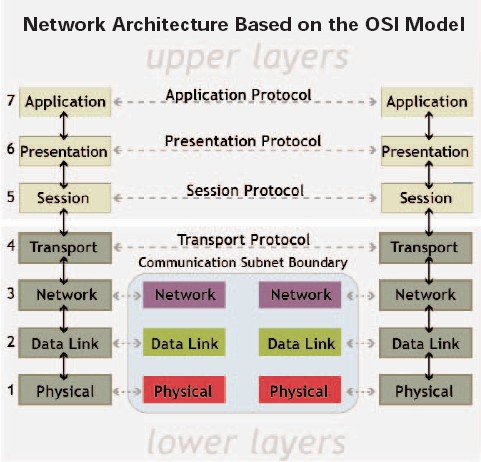OSI is a model of network architecture and a suite of protocols (a protocol stack) to implement it, developed by International Organization for Standardization (ISO) in 1978 as a framework for international standards in heterogeneous computer network architecture. The OSI architecture is split between seven layers, from lowest to highest:
|

|
| Each layer uses the layer immediately below it and provides a service to the layer above. In some implementations a layer may itself be composed of sub-layers. Each level “talks to” the equivalent level on the other node. Transmission errors call for retransmission of affected packet or packets. |

|
|
Police arrested two kids yesterday, one was drinking battery acid, the other was eating fireworks. They charged one and let the other one off. — Tommy Cooper |